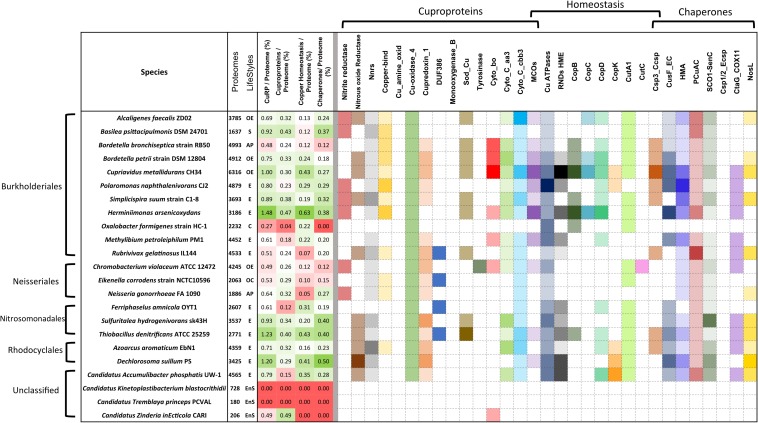FIGURE 2.
Copper-related proteomes in representative species of β proteobacteria. A limited number of species was selected that represent various orders of β proteobacteria (Burkholderiales, Neisseriales, Rhodocyclales, Nitrosomonadales, and unclassified) and various lifestyles. The full set of data describing the 119 species is provided in Supplementary Figure S1. The sizes of the proteomes (numbers of proteins) and the lifestyles are given in the second vertical panel, with the same abbreviations as in the legend to Figure 1. In the third vertical panel are shown the proportions (in%) of the copper-related proteomes (CuRP) relative to the complete proteomes for each species, and the proportions (in%) of the proteins in the three functional categories (cuproproteins, copper-homeostasis proteins, and copper chaperones) relative to the complete proteomes. In that panel, the white, green, and red background colors represent average values, above-average values, and below-average values, respectively, relative to the averages for the 119 species. The intensities of the colors are proportional to the distances to the average values. The abundances of each type of proteins in each bacterial species are represented in the last panel. Note that MCOs are both cuproproteins and copper-homeostasis proteins, and Csp3_Ccsps (cytoplasmic copper storage proteins) are both copper-homeostasis proteins and copper chaperones. The intensities of the colors increase with the number of paralogs in each bacterial species, with white indicating the absence of the protein. The absolute numbers of proteins of each type in each bacterial species can be found in Supplementary Table S2.

